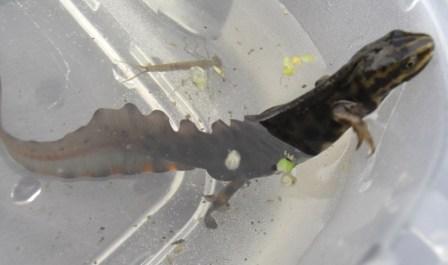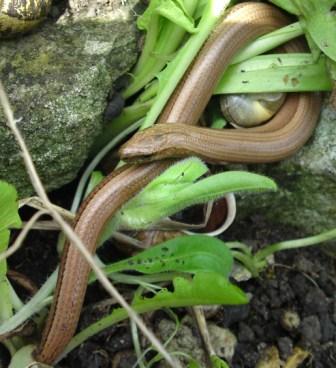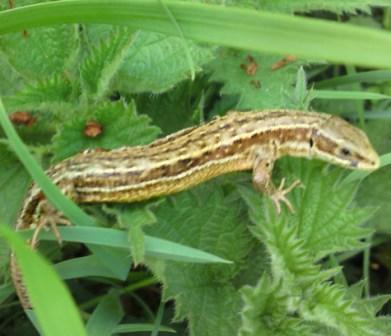 |
| Smooth Newt. © Lucy Emery. |
With its combination of mature gardens and surrounding countryside the village hosts a wide variety of amphibians and reptiles. Garden ponds are one of the best way to attract amphibians and reptiles into your garden and if you wish for any information about creating ponds please contact the group. We have a large numbers of Common toad and Common frog reported as well as good populations of Smooth Newt, shown on the right with a Stone fly nymph in the background. Frogs and newts don’t easily co-exist so ponds tend to have a predominance of one or the other. We also have records of the much rarer Palmate and Great crested newt, the later being a protected species. We are particularly keen to encourage Great crested newts which rely on having a network of ponds which they travel between for distances of up to 1 Km along suitable wildlife corridors. Unfortunately this is one area where new developments in the village can have an adverse effect. We have had many reports of slow worms around the village some of which can be up to half a metre long which often gets them mistaken for snakes.
 |
| Slow worm. © Lucy Emery. |
The two species of snake that are relatively common are the poisonous Adder which mainly lives on the Chalk down land and the Grass snake which occur frequently in garden compost heaps. The largest reported Grass snake was nearly a metre long and seen consuming a frog in a garden pond.
 |
| Common Lizard. © Lucy Emery. |
The only species of lizard we have reports for is the Common Lizard. These can be found amongst the tussocks of long grass close to patches of scrub on the down land, but there have been some reports of them ingardens backing onto more open ground. You need a fair degree of patience to see lizards and surprisingly it is often easier to hear them before they are seen. We occasionally put out small black squares of corrugated sheeting as a survey technique to attract them, so if you see any around please leave them alone, they are all clearly marked and we do take children’s groups around to what’s underneath them.
